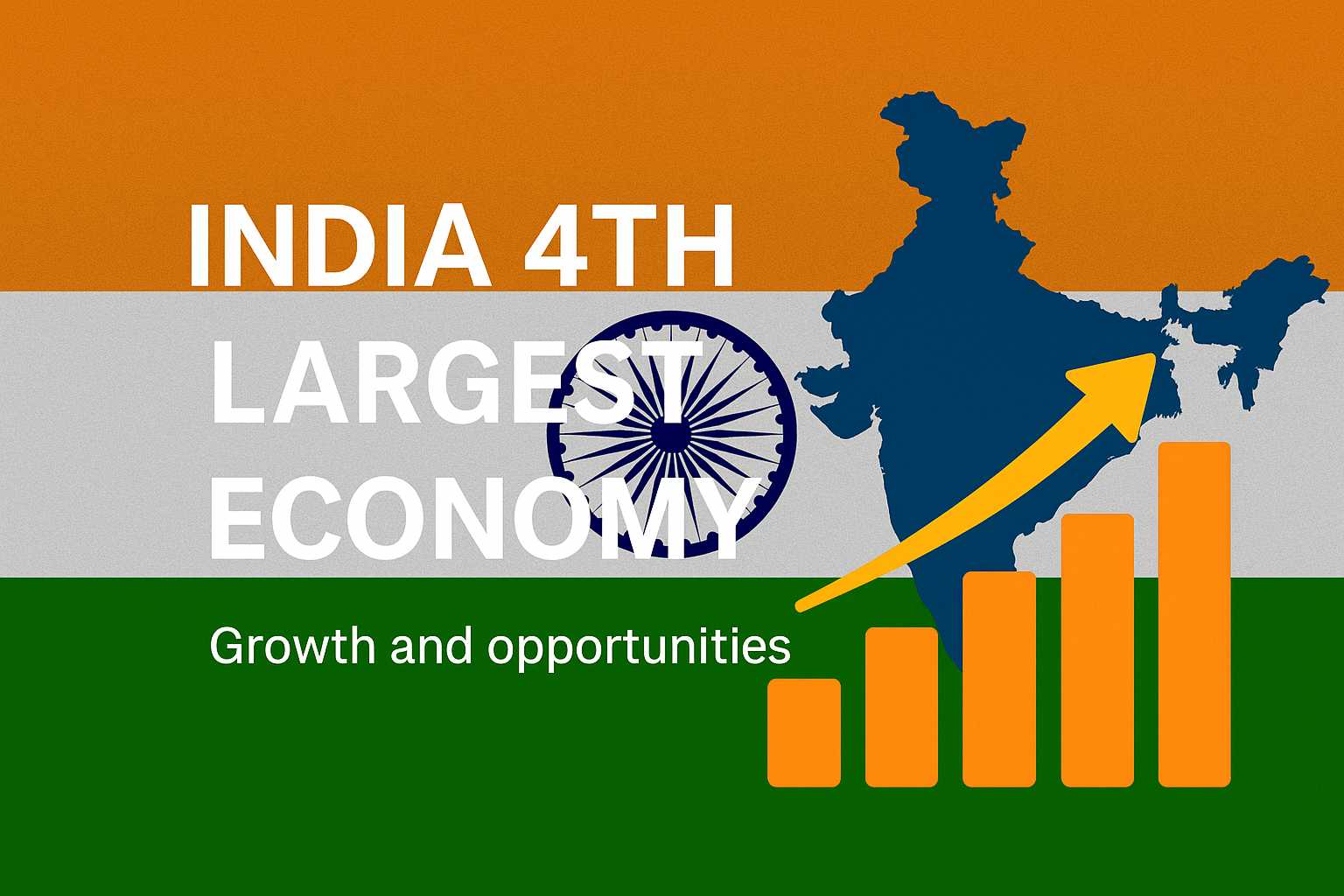India has officially surpassed Germany to be ranked as the world’s fourth-largest economy, based on nominal Gross Domestic Product (GDP). This incredible feat positions India just behind the United States, China, and Japan, firmly establishing India 4th largest economy in the global rankings. While this achievement is lauded across economic and political circles, the ordinary Indian cannot help but ask, “How does this impact me? Will my daily life actually change?”
In this post, we’re going to break down what this economic milestone means for the man on the street, in ways that are easy to understand and relate to. We’ll examine the prospects for benefits, current constraints, and what the future holds for India’s economic progress now that India 4th largest economy is more than just a headline—it’s a shift with real potential to reshape lives.
Understanding the Significance: What Does Being the 4th Largest Economy Mean?
GDP, or Gross Domestic Product, is the sum of goods and services produced in a country. By surpassing Germany, India as the 4th largest economy has proven its fast growth in sectors such as services, manufacturing, technology, and exports. As per latest data, India’s GDP in 2025 shows this strong momentum.
But what does that mean for you?
- Increased Global Influence: A higher GDP enhances India’s negotiating power on global platforms like the G20, IMF, and UN.
- Investor Confidence: Global investors are more likely to see India as a stable and promising market, bringing in Foreign Direct Investment (FDI).
- Boost in National Pride: There’s no denying the psychological impact — Indians feel proud, and that boosts consumer and business sentiment.
Yet, GDP by itself does not capture income distribution, quality of jobs, or standards of living. Nevertheless, India becoming the 4th largest economy contributes to its international credibility.
Will This Growth Lower Prices or Improve Daily Expenses?
One common myth is that higher GDP will automatically lower living costs. While a growing economy does open doors for better infrastructure and resources, it doesn’t instantly reduce:
- Fuel prices
- Grocery bills
- Rents
- Loan EMIs
In fact, inflation might still be high if economic growth isn’t inclusive. However, in the long term, a healthy economy can stabilize these factors through smart policymaking.
Here’s how it could help over time:
- More Government Revenue: Higher GDP means more tax collection, which can fund subsidies, education, and healthcare.
- Better Credit Availability: A strong economy often results in lower interest rates and better loan terms.
- Currency Strength: A growing economy strengthens the Rupee, making imports like electronics, fuel, and foreign education cheaper.
These advantages capture the way India’s economic growth, if well managed and sustained, can lighten the economic burden on the common man—particularly as India 4th largest economy headlines continue to dominate. With India 4th largest economy status now a reality, the hope is that increased investment, job creation, and infrastructure development will directly benefit everyday citizens.
Job Creation and Economic Opportunities in the 4th Largest Economy
This is where GDP growth really starts to impact the common man.
India’s booming sectors include:
- Information Technology (IT)
- Pharmaceuticals and Healthcare
- Manufacturing (Make in India push)
- E-commerce and Startups
India’s growth as the 4th largest economy exposes the labor market to global and domestic players in line with the trends of the current economy and demand for labor.
With the growth of the economy, firms invest more, and fresh employment opportunities are created. Even foreign firms can establish local operations and employ Indian professionals.
For you, this could mean:
- More job opportunities in Tier 2 and Tier 3 cities
- Better salaries due to higher demand
- Access to global careers without leaving the country
However, the benefits will be uneven unless there’s a focus on upskilling the workforce.
Will Infrastructure and Public Services Improve?
Yes, and we’re already seeing it.
As the economy grows, the government gets more resources to invest in public infrastructure:
- Roads, highways, and expressways
- Smart cities and urban transport
- Digital infrastructure (like UPI, ONDC, 5G)
- Healthcare and educational reforms
For example:
- Bullet train projects are underway.
- New metro lines are expanding in cities like Pune, Bengaluru, and Lucknow.
- Digital platforms like DigiLocker and UPI have made services accessible to all.
What this means for you:
- Faster commutes
- Easier digital payments and banking
- Better quality of life in both urban and rural areas
These enhancements demonstrate how India 4th largest economy status and GDP 2025 growth can translate into significant infrastructure development, reaching the lives of common people.
Is Everyone Benefiting from This Growth?
Unfortunately, no.
India’s GDP is rising, but so is income inequality. The rich are getting richer much faster than the poor are escaping poverty.
Challenges include:
- Informal labor market vulnerabilities
- Uneven access to quality education and healthcare
- Rural-urban divide
- Gender pay gap
For the common man to really benefit, the government needs to ensure inclusive growth — when economic gains reach all sections of society. This is important to bridge the gap pointed out by recent India 4th largest economy and global economy ranking 2025 reports.
The Role of the Government: Policy Makes All the Difference
India’s future growth must be supported by policies that prioritize:
- Affordable housing
- Accessible education
- Skill development programs
- Strong labor laws
- Financial inclusion
With proper policy, GDP growth can be a reality that touches the common Indian citizen. This is where the link between India surpassing Germany GDP rankings and real impact on the common man is crucial.
So, What Can You Do?
As an individual, you can:
- Stay informed and aware of economic changes
- Invest in your education and skills
- Use digital tools for financial planning and access
- Hold your leaders accountable for inclusive policies
The more active and educated citizens there are, the greater the chances that this economic growth will result in a better quality of life for all. Being in India 4th largest economy also brings with it a responsibility — to contribute, participate, and grow along with the country.
Final Thoughts: A Moment to Celebrate, But Also to Act
Reaching the India 4th largest economy status is a historic milestone for India. It indicates power, endurance, and potential. But statistics do not feed children or send them to school unless they are complemented with intent and action.
For the common man, the growth can deliver real change — but only if it is properly directed.
The future looks good. The question is: Are we prepared to seize it?



